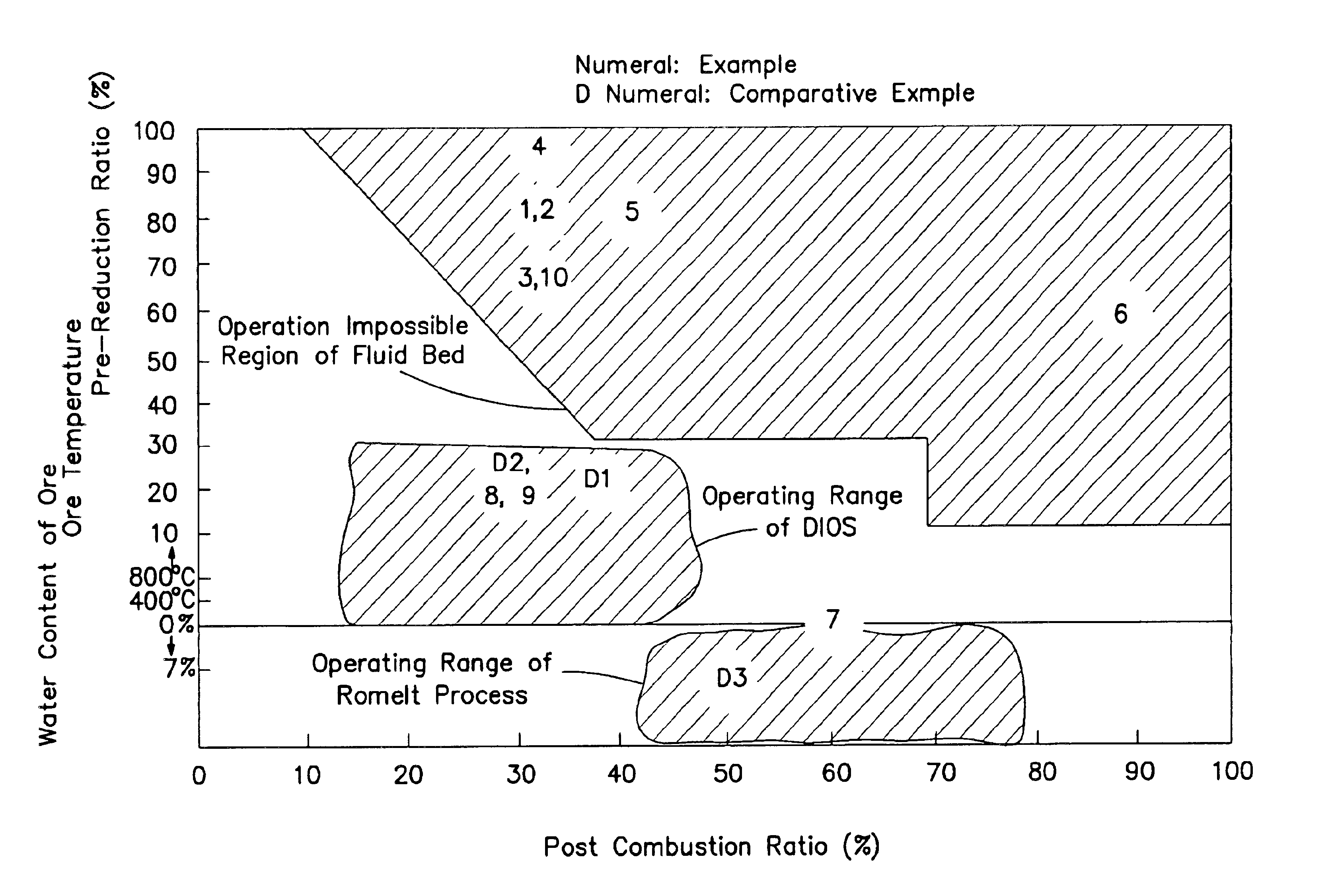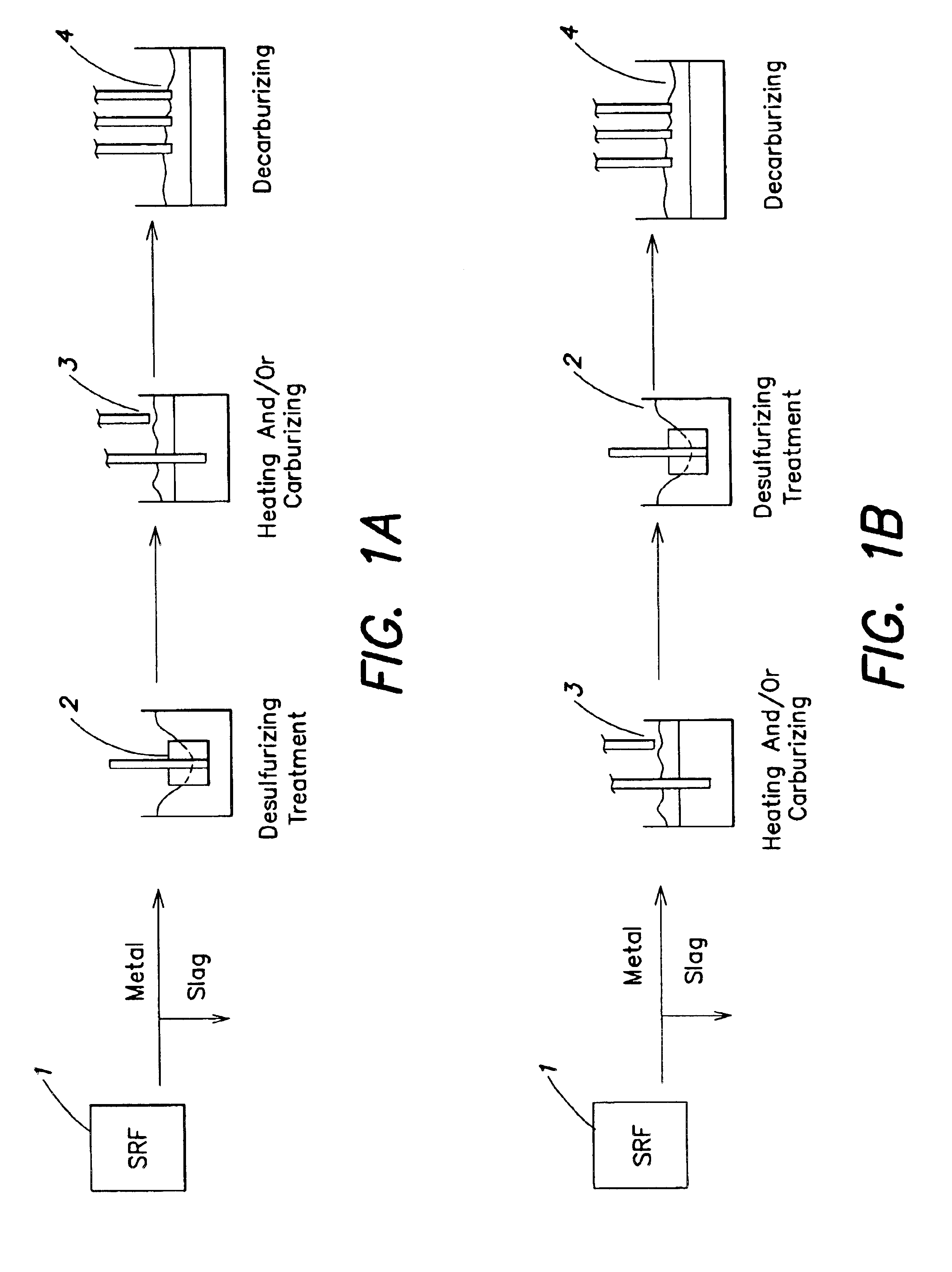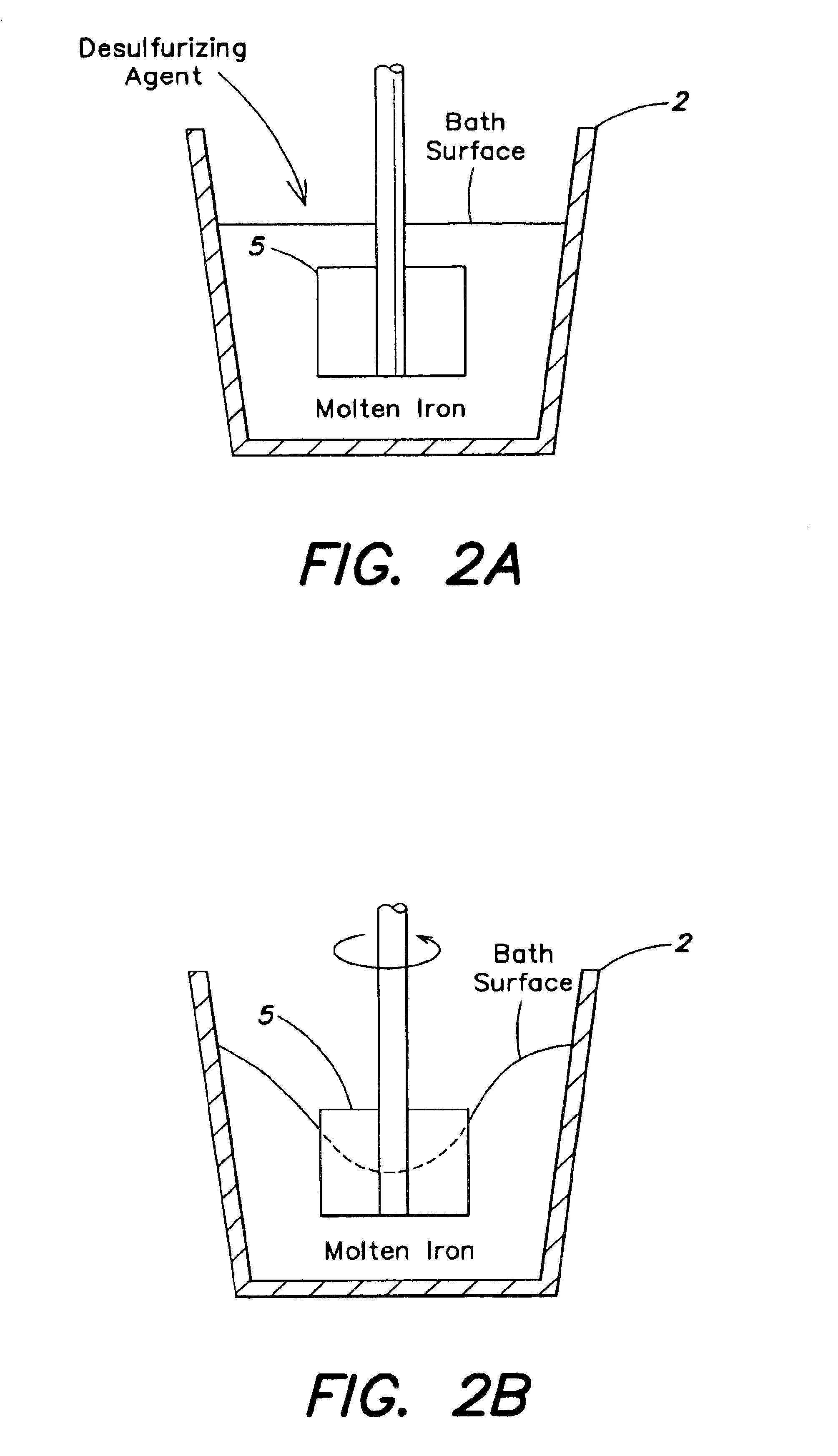Smelting reduction method
a reduction method and molten iron technology, applied in the direction of manufacturing converters, furnaces, metal processing, etc., can solve the problems of increasing equipment costs, difficulty in reducing sulfur levels below 0.01 wt, and increasing the cost of refractory to be used thereto
- Summary
- Abstract
- Description
- Claims
- Application Information
AI Technical Summary
Benefits of technology
Problems solved by technology
Method used
Image
Examples
embodiment 1
operates the step of heating and / or carburizing the molten iron before or after the desulfurizing step so as to make difference large between the melting point and the temperature of the molten iron. By this treatment, adherence of metal of the low carbon molten iron is improved, and allowable heating margin in a post-process as the decarburization may be secured. The heating and / or carburizing step may be performed before or after the desulfurizing process in the molten iron refining container for desulfurization or other molten iron refining containers.
If the heating and / or carburizing step is operated after the desulfurizing step, the temperature of the same may be lowered than operating before the desulfurization, and the heat loss is small and the wearing of the refractory or bubbling lance can be suppressed. On the other hand, if the heating and / or carburizing step is operated before the desulfurizing step, a hot slag having not been separated from the metal at pouring can be ...
embodiment 2
is the molten iron refining process using the converter typed reacting containers of two or more, desulfurizing the molten iron in at least one converter typed reacting container, and decarburizing the desulfurized molten iron in the converter typed reacting container so as to produce liquid steel. Therefore, the inventive process no longer requires the desulfurization outside furnace conventionally performed excepting an especial case of producing ultra low S steel.
The desulfurizing process and the decarburizing process in Embodiment 2 can be performed using optionally different converter typed reacting containers, and accordingly it is possible to practice the treatments by respectively installing the converter typed reacting container for desulfurization and the converter typed reacting container for decarburization, but the most preferable and useful practicing mode of the invention is to utilize the converter typed reacting containers or two or more including the spare machine ...
example 1
The 100 t molten iron was charged into the 100 t converter (the content volume 90 m3 after laying bricks), the amount of the bottom blowing gas was 0.1 Nm3 / t / min of molten iron, burnt lime of 5 kg / t of molten iron was dropped by gravity, and the desulfurizing treatment was practiced. In this desulfurizing treatment, [S]was decreased from 0.032 wt % to 0.010 wt % for around 15 minutes from starting of the treatment as shown under.
[C][S]Temp. of Molten IronBefore treatment4.5 wt %0.032 wt %1400° C.After treatment4.5 wt %0.010 wt %1360° C.
Subsequently, the desulfurized molten iron was carried out with the decarburizing treatment in another converter, and the steel of [C]: 0.05 wt % and [S]: 0.010 wt % was produced.
PUM
| Property | Measurement | Unit |
|---|---|---|
| temperature | aaaaa | aaaaa |
| temperature | aaaaa | aaaaa |
| temperature | aaaaa | aaaaa |
Abstract
Description
Claims
Application Information
 Login to View More
Login to View More - R&D
- Intellectual Property
- Life Sciences
- Materials
- Tech Scout
- Unparalleled Data Quality
- Higher Quality Content
- 60% Fewer Hallucinations
Browse by: Latest US Patents, China's latest patents, Technical Efficacy Thesaurus, Application Domain, Technology Topic, Popular Technical Reports.
© 2025 PatSnap. All rights reserved.Legal|Privacy policy|Modern Slavery Act Transparency Statement|Sitemap|About US| Contact US: help@patsnap.com



